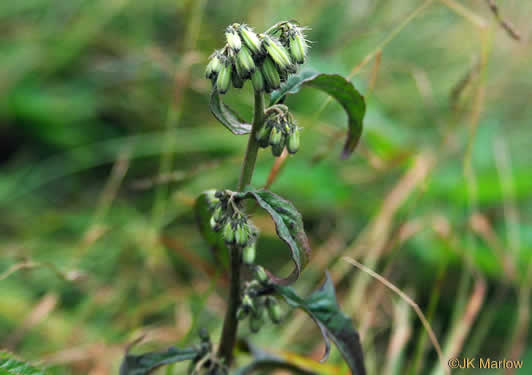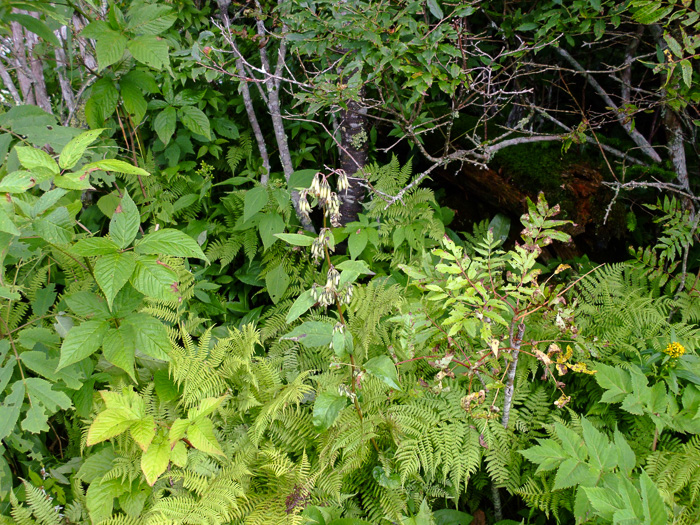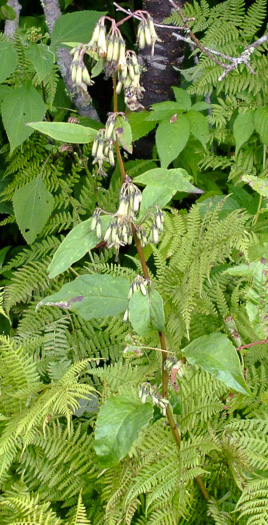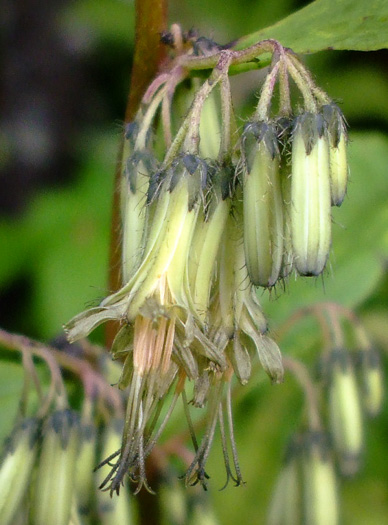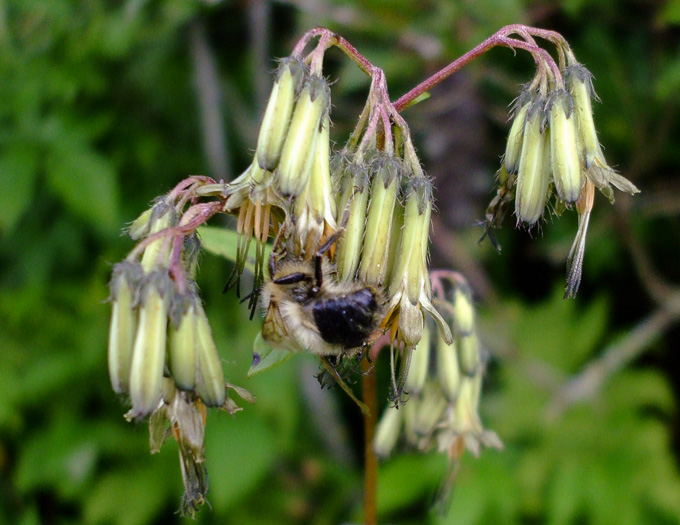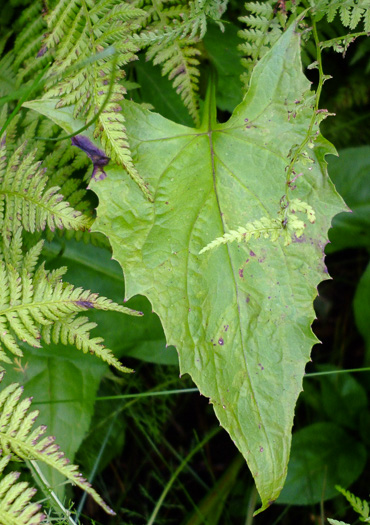Spermatophytes (seed plants): Angiosperms (flowering plants): Eudicots: Core Eudicots: Asterids: Campanulids: Asterales
WEAKLEY'S FLORA OF THE SOUTHEASTERN US (4/14/23):
Nabalus roanensis
FAMILY
Asteraceae_
Go to FSUS key
Dig deeper at SERNEC, a consortium of southeastern herbaria.
Like N. cylindricus, this species has a narrow, cylindrical inflorescence, with drooping flowers Read more at Vascular Plants of North Carolina.
INCLUDED WITHIN
PLANTS NATIONAL DATABASE:
Prenanthes roanensis
FAMILY
Asteraceae_
INCLUDED WITHIN Floristic Synthesis of North America. BONAP (Kartesz, 2021)
Nabalus roanensis
INCLUDED WITHIN Flora of North America north of Mexico, vol. 19-20-21 (2006)
Prenanthes roanensis
INCLUDED WITHIN Floristic Synthesis of North America (Kartesz, 1999)
Prenanthes roanensis
INCLUDED WITHIN VASCULAR FLORA OF THE CAROLINAS (Radford, Ahles, & Bell, 1968) 179-06-004:
Prenanthes roanensis FAMILY Asteraceae_
INCLUDED WITHIN Britton & Brown Illus Flora of Northeast US & adjacent Canada (Gleason, 1952)
Prenanthes cylindrica
SYNONYMOUS WITH Manual of the Southeastern Flora (Small, 1933, 1938)
Nabalus roanensis
COMMON NAME:
Roan Mountain Rattlesnake-root, Appalachian Rattlesnake-root
To see larger pictures, click or hover over the thumbnails.
Jeff Ausmus jma_4455b
September Sevier County NC
Great Smoky Mountains National Park
Inflorescence cylindric, thyrsoid, the branches very short, per Weakley's Flora (2020).
Jeff Ausmus jma_4456
September Sevier County NC
Great Smoky Mountains National Park
The involucres have some long spreading hairs and black-tipped bracts, per Wildflowers of the Southern Mountains (Smith, 1998).
![]() COMPARE
involucral bracts of Rattlesnake-root
COMPARE
involucral bracts of Rattlesnake-root
Jeff Ausmus jma_4457
September Sevier County NC
Great Smoky Mountains National Park
Pollinator at work.
Jeff Ausmus jma_4459
September Sevier County NC
Great Smoky Mountains National Park
Leaves hastate [without additional lobes]; margins dentate, per Weakley's Flora (2020).
WEAKLEY'S FLORA OF THE SOUTHEASTERN US (4/14/23):
Nabalus roanensis
FAMILY
Asteraceae_
INCLUDED WITHIN
PLANTS NATIONAL DATABASE:
Prenanthes roanensis
FAMILY
Asteraceae_
INCLUDED WITHIN
Floristic Synthesis of North America. BONAP (Kartesz, 2021)
Nabalus roanensis
INCLUDED WITHIN
Flora of North America north of Mexico, vol. 19-20-21
Prenanthes roanensis
INCLUDED WITHIN
Floristic Synthesis of North America (Kartesz, 1999)
Prenanthes roanensis
INCLUDED WITHIN
VASCULAR FLORA OF THE CAROLINAS (Radford, Ahles, & Bell, 1968) 179-06-004:
Prenanthes roanensis
FAMILY
Asteraceae_
INCLUDED WITHIN
Britton & Brown Illus Flora of Northeast US & adjacent Canada (Gleason, 1952)
Prenanthes cylindrica
SYNONYMOUS WITH
Manual of the Southeastern Flora (Small, 1933, 1938)
Nabalus roanensis
If a search such as "Carex leptalea var. leptalea" doesn't deliver the results you want, try "Carex leptalea".
Or, to minimize chances of a misspelling, try just "Carex le".
Less is more: If "pencil flower" doesn't deliver the results you want, try "pencil".

